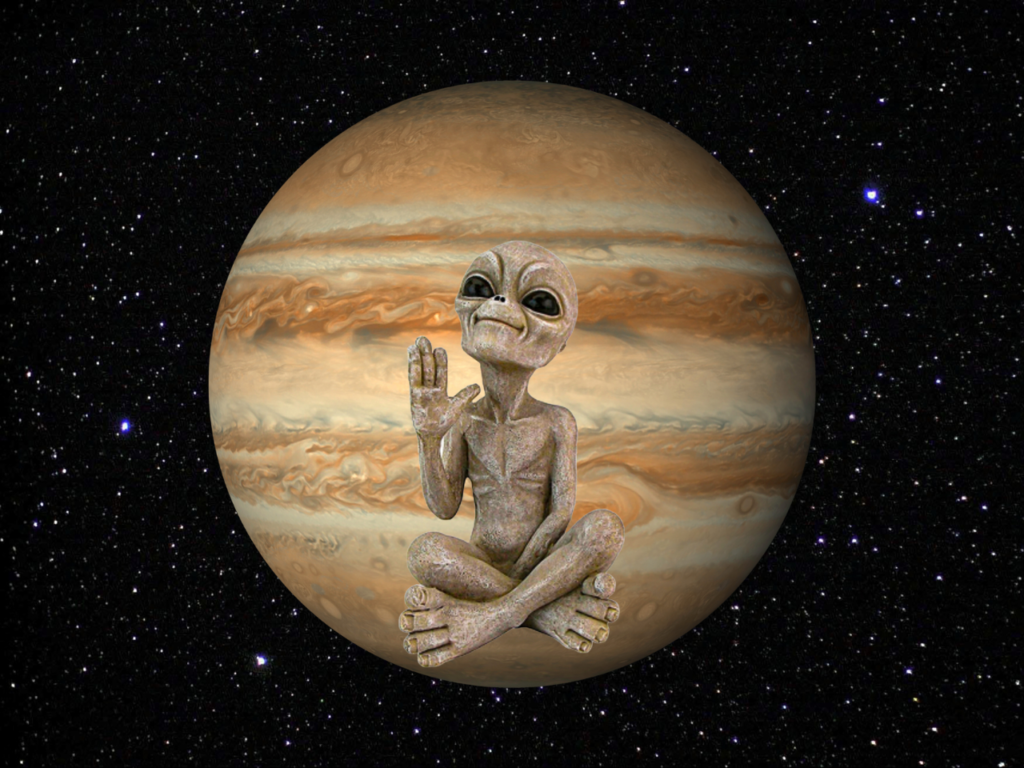On Jupiter’s moon Europa, NASA’s James Webb Space Telescope has made a ground-breaking discovery. The moon’s unusual surface was photographed by the telescope’s infrared camera, which also revealed fascinating signs of life in the form of a lot of carbon dioxide.
It’s important to comprehend the idea of a “frigid terrain,” which is defined by extremely cold temperatures, in order to fully appreciate the relevance of these discoveries. The cold regions of Europe had large amounts of carbon dioxide, according to experts.
The results of the James Webb Space Telescope point to the existence of carbon, a component of life, in an ocean under Europa’s frozen surface. The magazine “Science” released an amazing report on September 21, 2023, describing the finding of carbon on this frigid moon. In order to find evidence of a space observatory on the surface of the moon, two teams of separate astronomers worked together on this project. The study’s results clearly imply the presence of carbon dioxide in large quantities on Europa, providing encouraging signs of future life.
The study’s primary author, Geronimo Villanueva, stressed the significance of chemical variety for life on Earth, saying that more diversity increases the possibility of existence. He continued by saying that the ocean of Europa holds the key to understanding whether carbon dioxide supports or hinders life.
One of the few asteroids in our solar system where scientists think life may live is Europa. Its ocean has twice as much water as the oceans on Earth and is hidden behind a thick layer of ice. However, NASA reminds us that life requires an energy source, such as organic nutrients, as well as a constant supply of organic molecules, in order to survive and grow.
The researchers came to the conclusion that the carbon dioxide most likely came from the ocean of the moon because it is not stable on Europa’s surface. According to Samantha Trumbo, a researcher at Cornell University, the carbon dioxide on Europa is thought to have come from the depths of the ocean, which is a major discovery given the basic need for carbon for biological life. Trumbo said that the discovery of salts from the ocean by the Hubble Space Telescope earlier in the same area supported the theory that carbon likely emerged along with these salts.
Villanueva’s team, according to NASA, was looking for proof of water vapor plumes erupting from Europa’s surface, a phenomenon that had only been inconclusively seen in prior years using NASA’s Hubble Space Telescope. However, the team was able to set a precise upper limit on possible material ejection rates since the most recent data from the Webb telescope showed no indications of plume activity.
They underlined that their failure to find plumes does not prove that they do not exist, leaving open the possibility that they may be sporadic and only visible at particular periods. These discoveries have significance for both the NASA Europa Clipper project and the European Space Agency’s Jupiter Icy Moons Explorer (JUICE) mission, providing important new information on the cryptic geology of the mystery moon.
For clues that water vapor is spewing from Europa, a moon of Jupiter, scientists have been watching. Although some prior Hubble Space Telescope observations hinted at the presence of plumes, the data remained inconclusive. In a recent analysis of data from the James Webb Space Telescope, no indication of plume activity was discovered. This does not imply that there are no plumes, either; it is possible that they are changing and only visible at particular periods. Future space missions like NASA’s Europa Clipper and ESA’s Jupiter Icy Moons Explorer will be able to learn from these new discoveries when they explore Europa.
Currently, NASA is preparing to launch a spacecraft named Europa Clipper to explore Europa and its potential for supporting life. While searching for signs of water vapor erupting from Europa’s surface, scientists came up empty-handed. We now have a better grasp of Europe and its potential for habitability, thanks to this new information.
One of the most significant scientific discoveries in human history would be the discovery of potential evidence of life outside of Earth. It would be extremely helpful to learn about the limitations of life’s adaptability by finding it on one of Jupiter’s moons, and this knowledge might help us in our quest for life on other planetary bodies like Mars or Europa. This may lead to more financing and enthusiasm for space exploration. Finding life outside of Earth might have significant philosophical and existential ramifications, posing difficult issues about the nature of life and its predominance in the cosmos, as well as our role in the universe.

